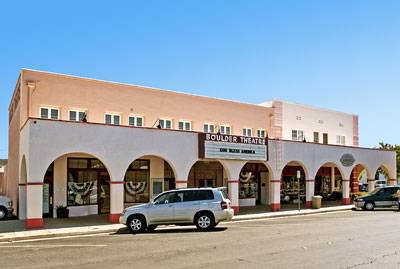National Register of Historic Places in Clark County
Boulder City Historic District
Bounded by Nevada Way, Avenue L, Date Street,5th Street
Boulder City
The Boulder City Historic District is significant for its historic associations with the Boulder Canyon Project, the nation's first large-scale, multi-purpose reclamation effort and the turning point for a new era in the history of Federal reclamation programs and policies. As the town created to house over four thousand construction workers in the harsh Nevada desert, Boulder City was a significant integral part of the successful completion of Hoover Dam and the Boulder Canyon Project.
Constructed at the outset of the Great Depression, Boulder City was conceived by the Federal government as an ideal town, a model city, to which the American people could look for hope of a better future, and subsequently became the first federal effort to construct New Towns in American history.
The Boulder City Historic District holds national significance for its place in the history of American City Planning as the first fully-developed experiment in new town planning as promoted by the Community Planning Movement, a movement which is recognized as the force which most influenced contemporary community planning practices.
The Boulder City Historic District is significant as well for its architectural integrity and ability to convey associations with the events and people that made direct contributions, to the creation of the city plan, its construction and development, and its continued role as a permanent city and successful new town.
The Boulder City Historic District contains a total of 514 buildings or structures. Of those, 408 were constructed during the first eleven years (1931-1942), which correspond to the initial construction and operations phase of the city's history. Sixty-six were constructed between the end of World War II and 1950, and the remaining 40 properties were built after 1950.
Of the 514 properties built between 1931 and the present, 270 remain in their original condition or with a high degree of architectural integrity. One hundred seventy-six of the buildings have modifications which are reversible or sensitive to the property's original architectural integrity and do not affect the overall character of the district. Sixty-eight properties have irreversible modifications which are incompatible with the architectural setting of the City and do not contribute to the feeling or sense of time and place of the historic district.
Source: NRHP Nomination Form
